Taiwanese people in New York City
New York City is home to the second-largest Taiwanese American population, after Los Angeles, California, enumerating an estimated 40,000 to 50,000 individuals as of 2020.
| Part of a series on |
| Ethnicity in New York City |
|---|
|
Ethnicities Arabs |
|
Neighborhoods Astoria Bed-Stuy Bensonhurst Borough Park Brighton Beach Chinatown, Brooklyn Chinatown, Flushing Chinatown, Manhattan Crown Heights Curry Hill Curry Row Elmhurst Flatbush Harlem Jackson Heights Jamaica Koreatown, Manhattan Koreatown, Queens Le Petit Senegal Little Australia Little Brazil Little Egypt Little Fuzhou Little Germany Little Italy Little Manila Little Poland Little Saigon Little Spain Little Sri Lanka Little Syria Little Ukraine Loisaida Spanish Harlem Sunset Park Thirteenth Avenue Washington Heights |
History and location
The Flushing neighborhood of the borough of Queens in New York City, is one of the largest and fastest growing Taiwanese enclaves outside Asia. Main Street and the area to its west, particularly along Roosevelt Avenue, have become the primary nexus of Flushing's Taiwanese community. However, this community continues to expand southeastward along Kissena Boulevard and northward beyond Northern Boulevard. Taiwanese began the surge of immigration in the 1980s. Flushing originally started off as Little Taipei or Little Taiwan due to the large Taiwanese population. Due to the dominance at the time of working class Cantonese immigrants of Manhattan's Chinatown including its poor housing conditions, the more affluent Taiwanese population could not relate to them socioeconomically and settled in Flushing.
Later on, when other groups of non-Cantonese Chinese, mostly speaking Mandarin started arriving into New York City, like the Taiwanese, they could not relate to Manhattan's then dominant Cantonese Chinatown, as a result they mainly settled with Taiwanese to be around Mandarin Chinese speakers. Later, Flushing's Chinatown would become the main center of different Chinese regional groups and cultures in New York City. By 1990, Asians constituted 41% of the population of the core area of Flushing, with Chinese in turn representing 41% of the Asian population.[1] However, ethnic Chinese, including Taiwanese, are constituting an increasingly dominant proportion of the Asian population as well as of the overall population in Flushing and its Chinatown. A 1986 estimate by the Flushing Chinese Business Association approximated 60,000 Chinese in Flushing alone.[2] Mandarin Chinese, commonly spoken by Taiwanese, has becom the lingua franca] in New York City's ethnic Chinese communities.[3]
Elmhurst, another neighborhood in Queens, also has a large and growing Taiwanese community.[4] Previously a small area with Chinese shops on Broadway between 81st Street and Cornish Avenue, this new Chinatown has now expanded to 45th Avenue and Whitney Avenue. Since 2000, thousands of Taiwanese Americans have migrated into Whitestone, Queens (白石), given the sizeable presence of the neighboring Flushing Chinatown, and have continued their expansion eastward in Queens and into neighboring affluent and highly educated Nassau County (拿騷縣) on Long Island (長島).[5][6][7] Facilitating migration from Taiwan to New York City is China Airlines, which flies non-stop between Taipei Taoyuan International Airport and JFK International Airport in Queens.
Taiwanese New Yorkers
- Taiwanese New Yorkers (紐約華台灣人)

- David Ho

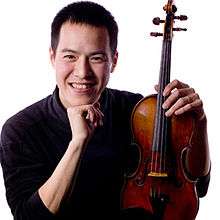
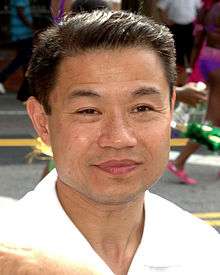
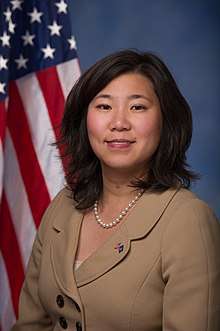
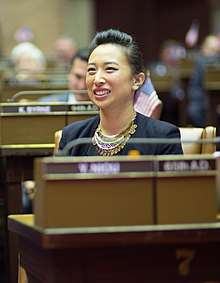


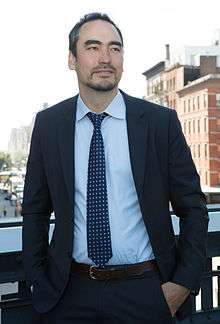
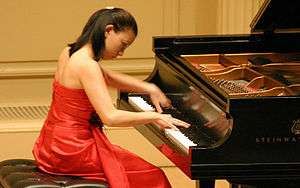
.jpg)
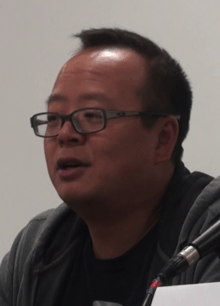
Academia and humanities
- Tim Wu – professor at Columbia Law School
Academia and sciences
- David Ho – scientific researcher and Helen Wu professor at Columbia University
Business
- Charles Wang – late owner, New York Islanders team of the National Hockey League
Entrepreneurship and technology
- Andrew Yang – founder, Venture for America; U.S. 2020 Democratic presidential candidate and pioneer of the Universal Basic Income concept
Law, politics, and diplomacy
- Grace Meng – member of the United States House of Representatives, representing New York's 6th congressional district in Queens
- Yuh-Line Niou – member of the New York State Assembly, representing the 65th District in Lower Manhattan, elected in November 2016
- John Liu – first Taiwanese American, Chinese American, and Asian American to be elected New York City Comptroller, in 2009
Media
- Eddie Huang – writer, journalist, author of Fresh Off the Boat: A Memoir
- Jennifer 8. Lee – journalist, credits including The New York Times
- Jeff Yang – media consultant, "Tao Jones" columnist for The Wall Street Journal
Theater, arts, and culture
- Malan Breton – fashion designer
- Jenny Lin – pianist
- Joseph Lin – violinist
- Alexander Wang – fashion designer
- Jason Wu – fashion designer
- Sophia Yan – classical pianist; journalist
See also
- Asian Americans in New York City
- Chinese people in New York City
- Bangladeshis in New York City
- Demographics of New York City
- Filipinos in the New York metropolitan area
- Fuzhounese in New York City
- Indians in the New York City metropolitan region
- Japanese in New York City
- Koreans in New York City
- Russians in New York City
References
- Nancy Foner (2001). New immigrants in New York. Columbia University Press. pp. 158–161. ISBN 978-0-231-12414-0.
- Hsiang-shui Chen. "Chinese in Chinatown and Flushing". Retrieved March 29, 2010.
- Semple, Kirk (October 21, 2009). "In Chinatown, Sound of the Future Is Mandarin". The New York Times. Retrieved July 16, 2011.
- Marques, Aminda (August 4, 1985). "IF YOU'RE THINKING OF LIVING IN; ELMHURST". The New York Times. Retrieved May 4, 2009.
- Heng Shao (April 10, 2014). "Join The Great Gatsby: Chinese Real Estate Buyers Fan Out To Long Island's North Shore". Forbes. Retrieved March 29, 2016.
- Michelle Conlin and Maggie Lu Yueyang (April 25, 2014). "The Chinese take Manhattan: replace Russians as top apartment buyers". Retrieved March 29, 2016.
- Carol Hymowitz (October 27, 2014). "One Percenters Drop Six Figures at Long Island Mall". Bloomberg L.P. Retrieved March 29, 2016.